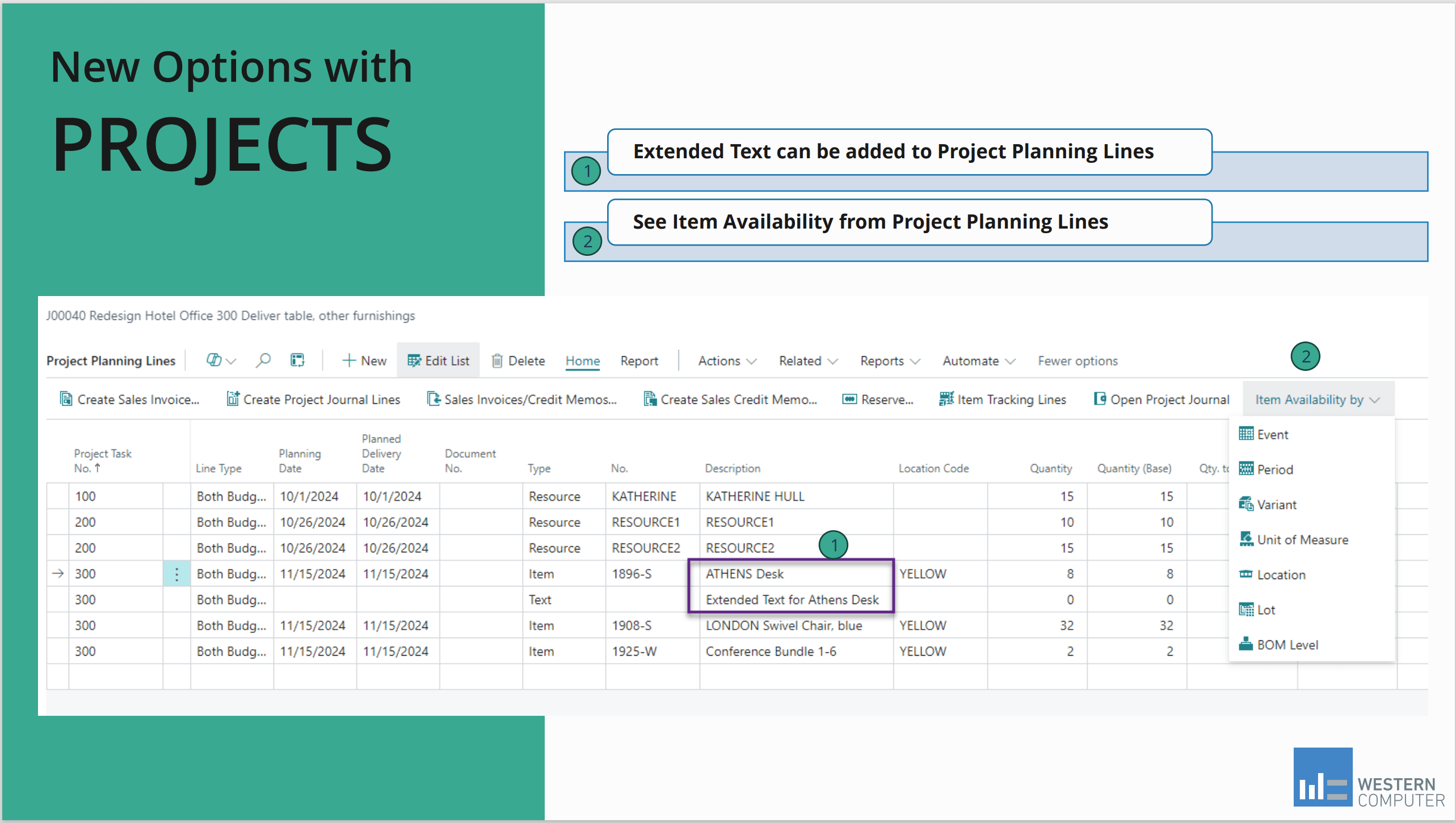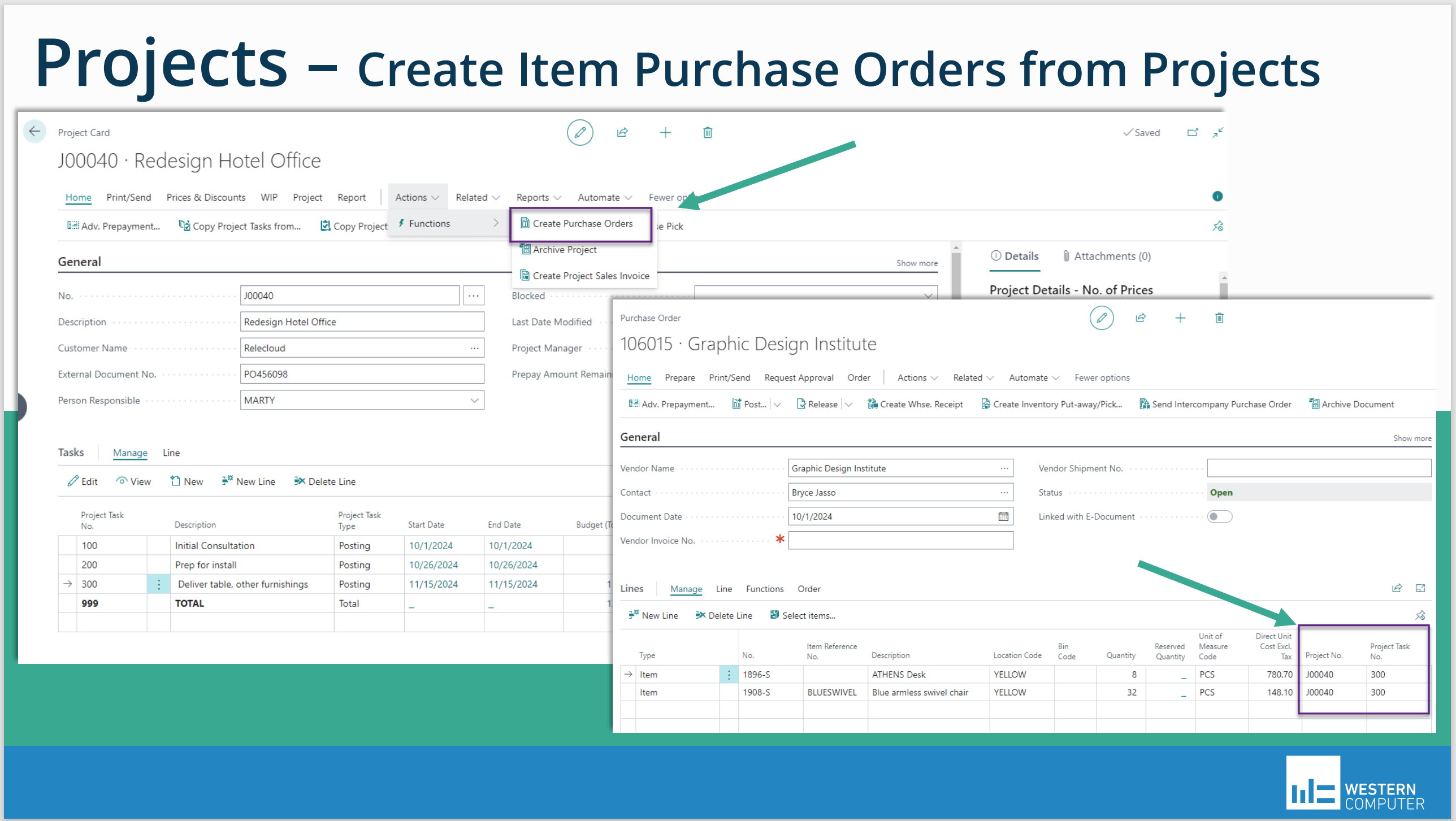In this series of bi-monthly blogs, Western Computer shares our expertise with tips and tricks to help users work more efficiently in Microsoft Dynamics 365 Business Central Cloud. Based on our more than 30 years in business—with 1,250+ solution implementations, including more than 350 in the cloud—we share the expertise we have accumulated to enable users to work as proficiently as possible. You can also subscribe to these blogs in our LinkedIn newsletter.
As Dynamics 365 users know, Microsoft launches major updates twice each year—during April and October. Minor updates then occur throughout the months following each major update.
How to Prepare for Upcoming Microsoft Dynamics Release Waves
Customers can test the updates in a sandbox environment before deploying them to their production environments. This allows you to identify any impacts the updates might have on your current workflows, and you can notify users what to expect from the new functionality.
In this blog, I share some of the key new features to look for in the Business Central Cloud Update Release Wave 2 that was announced in October. Some of the features are already available while others will appear in the coming months.
Page Scripting
This feature came out a couple of versions ago, but Microsoft has continued to enhance it, and not all users are aware of the function. When creating sales orders, purchase orders, items, and other forms, you can record keystrokes to verify the process users follow.
You can also use the page scripts to test processes as new features come out in the future. This allows you to more easily identify if a new feature impacts a process. New users can also use the scripts to learn the process for creating new entries.
E-Commerce Integration
Microsoft has also extended the integration of Business Central with the Shopify e-commerce platform. You can now integrate Shopify directly within Business Central without using a third-party connector.
In addition to the tighter integration, you will notice additional enhancements that automate the flow of information back and forth between Business Central and Shopify. Here are some of the cool things you can do:
- Add items in Business Central as Shopify variants.
- Synchronize product language translations automatically.
- Apply specific discounts when synchronizing prices.
- Define specific shipping fees.
- Export posted sales invoices so customers can see them in the Shopify portal.
- Reconcile payment transactions in Shopify with invoices from Business Central.
When handling returns in Shopify, you can enable locations to specify which warehouse or store each return goes to. Another handy new feature is importing and exporting product info between Shopify and Business Central.
Project Management
Microsoft continues to apply multiple enhancements to the Projects module (previously called Jobs). Recent changes have included adding payment terms, ship-to addresses, and the ability to invoice multiple customers against a single project from within the module.
Microsoft also previously expanded assembly BOMs onto project planning lines, and you can plan for items in Projects with order planning or your MRP solution.
For Release Wave 2, new Projects capabilities include adding extended text for items on invoices and viewing item availability by project—with location codes attached to each project.


The big new win for many users, however, is the flexibility to create purchase orders right in Projects. Users have been wanting this for years, and Microsoft has listened to the user community. You can easily see which items you need to purchase for a project and then create the PO with the project number and task lines automatically pushed to the PO.
Contracts and Subscriptions with Recurring Revenue
These new features prove helpful for anyone who sells products or services that customers consume monthly—whether it’s software, product maintenance, online services, or item rentals. For example, you can spread annual fees across monthly deferrals or set up automatic monthly or quarterly billing.
For recurring revenue invoices, Microsoft has added these features to Business Central:
- Usage-based billing
- Deferral integration
- Revenue recognition based on billing schedules
- Parameters and pricing for contract updates and renewals
- Recurring customer and vendor contracts
- Service repair contracts
Plus, there are more standard and Power BI reports for contracts, customers, billing schedules, recognized revenue, future billing dates, and amounts. You can also set up contract types that feed into service commitment templates that you can bundle subscriptions together in a package. You can even set up service items with a service commitment that turns into a contract that generates revenue.
Warehouse, Tax Form and Reporting Improvements
In your warehouse, users will appreciate how more than one user can post warehouse entries at the same time; table lockings are now a thing of the past!
For the accounting team, vendor 1099s now integrate with the IRS. This allows them to submit 1099s electronically to the IRS and email a copy to vendors or print them on plain paper—no more pre-printed forms to deal with.
Across your entire company, there are many new reports to look for in Business Central. These include two new balance sheet reports and three income statement reports, including one that allows you to show income by Dimensions. Through Power BI, there are 63 new reports in all—spanning finance, sales, purchasing, inventory, manufacturing, and project management.

Take a Deeper Dive
To go deeper on new features for Business Central Cloud, check out the Western Computer on-demand webinar, Launch Event: Business Central Update 2024 Release Wave 2. During this session, I team up with my colleague Philip Yap, a Business Central Practice Manager. We go into the Microsoft update process and some of the details you need to know as you fill out the various forms. If you need any assistance in implementing the new features we discuss, simply reach out to your account manager. We’re glad to help.
To Learn More
Western Computer offers deep expertise across the Microsoft technology stack, particularly in Dynamics 365 solutions. Our thought leaders can help you ensure your critical ERP application meets your business needs for today and beyond. For more information on how to use these Business Central tips, or for help in designing, deploying and supporting Microsoft Dynamics 365 solutions, contact Western Computer today.
About the Author
More Content by Telka Clem























